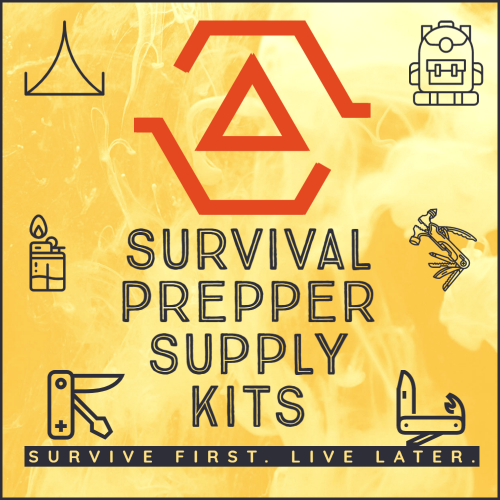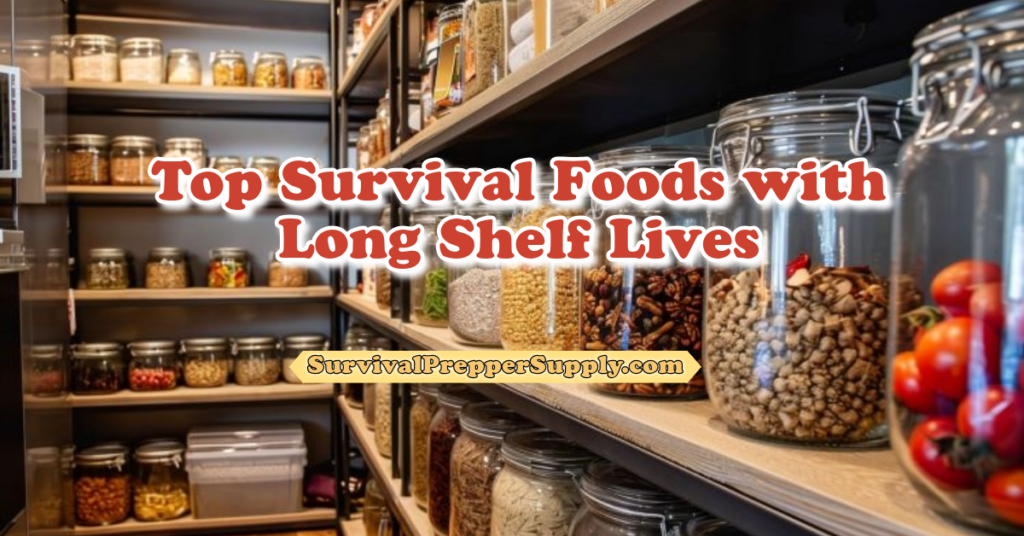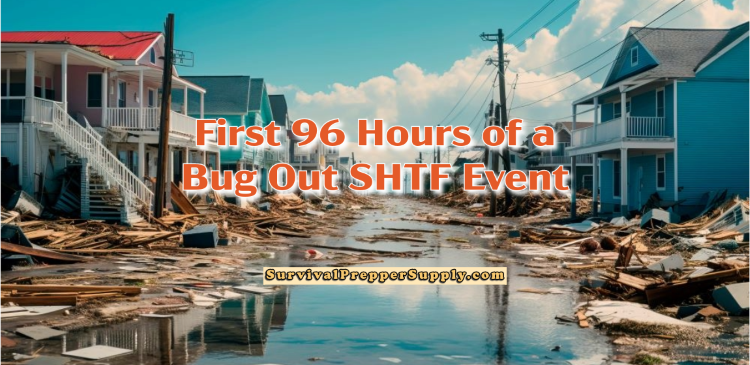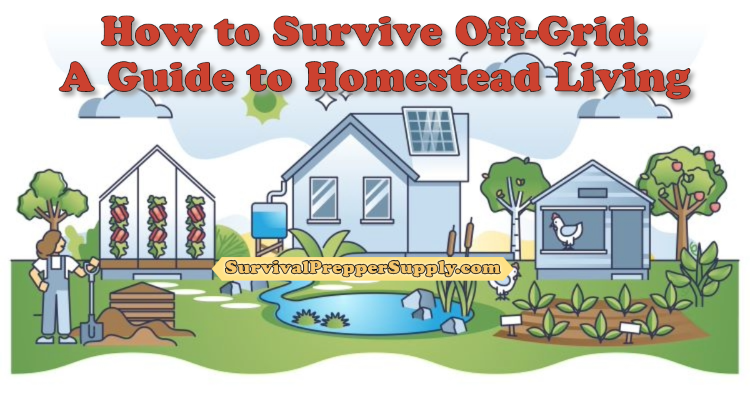This is your Ultimate SHTF Survival Lessons Guide for Lesson #1-2, Food and Water.
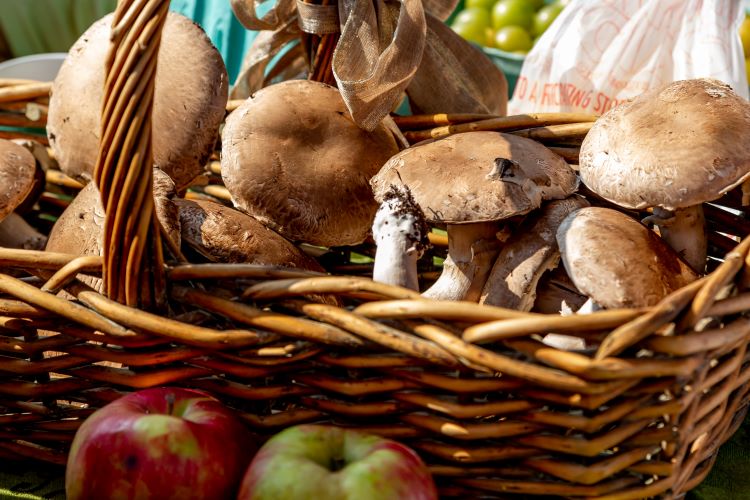
People usually prepare for an emergency, whether a minor one such as fleeing ahead of a storm or a more significant scenario, with supplies, a strategy, or both.
They know how to stockpile enough food and water, as well as other necessities. They also make preparations for escape and survival. These, however, are usually superficial plans that fail to take the survivalist far enough down the learning curve so they can function automatically in an emergency scenario.
Occasionally, the lessons learned occur along the route, exactly when you’re in the midst of a crisis. This is a difficult situation, and it doesn’t always go according to schedule. It’s preferable to guarantee that your family is safe and happy throughout events such as this by studying the most crucial principles for safety and implementing them on a routine basis so you don’t have to be concerned.
Here are ten important life pointers that everyone should know in order to defend themselves in any situation. Do not rely only on your supplies and the rudimentary preparations you have made, or you may come to regret not having prepared yourself better.
Lesson #1: How to Find and Purify Water
Your most essential asset is a water supply. You can live for three days without it, but most individuals concentrate on increasing their food supply. However, it is difficult to amass a large supply of drinking water.

It’s heavy and takes a lot of room, considering that everyone requires at least a gallon of clean water per day to survive. As a result, you must learn how to locate naturally occurring water, then make it clean and drinkable for your family.
If you live in a rain-prone region, one of the best things to do is set up a water-collection system. Collecting rainwater is much easier to clean than polluted water in a pond or a still-water body.
Read this Guide to Using Rainwater for Simple Living
You may be collecting rainwater in a downspout, a drainage system, or a garbage can. Rainwater collected in this way may have picked up dirt, leaves, and other contaminants, so purify it before drinking.
Even if you can’t see any bacteria with your bare eyes, there might have been bird excrement or another organism on the faucet handle that might contaminate the drinking water and cause sickness.
You can build a well on your land to get clean, drinkable water. This is something that should be done well in advance, but if it’s a crisis, it’s still a possibility.
Then, find out where you can get to water that is naturally accessible. Obtain a map of your area and look for creeks, rivers, lakes, and other sources of freshwater.

You next need to filter the drinking water. Using boiling water is a great way to purify water and get rid of most germs, making it safe for drinking. However, you must be able to use fire and wait until the water is cool enough to drink.
Please note that this post contains affiliate links, meaning I will get a small commission for qualifying purchases at no extra cost to the buyer.
Boiling water isn’t always convenient, especially if you’re on the move. It’s much more difficult when you’re traveling to a new location. Instead, try using basic purification pills.
Another option are water filters. Portable filters, such as water bottles with a built-in filter, let you drink water from any source, knowing that it has been cleaned before it gets to you. You can find another clean option in using a life straw. These are great portable straws which allows you to stick them into any water resources and drink with confidence that by the time it reaches your mouth, it’s been purified for safety.
Another way to purify water is to make a solar-powered distillation system. All you need for this is a small plastic tarp, a rock, and a jar. Place the jar in the middle of the sheet, then place the rock on top. Next, place the setup in the sun. The water will heat up, turn into steam, and collect in the pot.
Make sure you always have the proper supplies, such as water purification tablets, as well as the ability to locate and clean your own water in an emergency. This way, in an emergency, you won’t have to deal with the stress of figuring out how to do it.
Lesson #2: How to Forage and Hunt for Food
One of the most intelligent preparations for any disaster is to stock up on ready-made emergency meals. This is especially crucial if the crisis lasts a long time, or if the food supply is destroyed. In this situation, you’ll have to seek nourishment elsewhere.
Non-perishable foods are a fantastic thing to keep in stock, but they will eventually expire. The first thing you should do is to familiarize yourself with foraging. It is a safer way of obtaining the nutrients you require to survive.
Foraging refers to the act of searching for wild foods such as fruits, vegetables, and herbs. These may be found in nature, such as in your backyard, a nearby park, or even in your own garden.
You should first find out what foods are safe to consume in your area. You can do your own research and print a laminated guide containing photos and information about the local foods available.
Occasionally, there are two or more plants that look similar, yet one is toxic while the other is safe to consume. You want all of this information for yourself and your relatives. It’s a good idea to write down this information.
Look to see if there’s a local class with an instructor who can take you on a foraging trip into the wilderness. Not only will they be able to tell you which of the safest plants are to consume, but they will also be able to tell you which ones are dangerous, as well as how to prepare and store them for consumption.
One of the most crucial aspects of wild berry picking is that certain species, such as elderberries, must be cooked before consumption. This is because they contain a toxin that, if not removed, can cause nausea, vomiting, and even death. Other fruits, such as the raspberry, should be eaten raw.
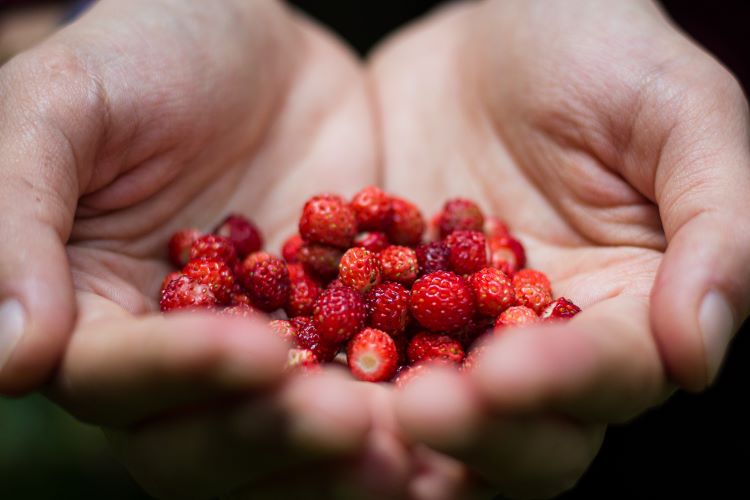
You can discover a wide variety of natural, nutritious, and tasty meals in nature, including acorn, blueberry, dandelion, purslane, mulberry, prickly pear, cattail, clover, mushroom, onion, pecan, sunflower, and thistle.
It is critical to know how to gather wild crops since removing them all might prevent them from growing again. You require a constant source of nourishment; therefore, you must be accountable when using the earth.
Searching is yet another technique for obtaining food. However, there is something else between gathering and searching. Insects, such as crickets, grasshoppers, or even ants, can provide much-needed nutrition if you’re hungry.
There are various methods for hunting, including traps, bows, arrows, firearms, and so on. You may want to begin with small animals, such as rabbit, squirrel, bird, etc.
Learn to set a snare or a trapping mechanism to catch prey. Make sure you cook the raw meat well before you eat it. Large wild animals such as deer and wild pigs may be found in certain regions. However, this is not recommended unless you have a large family or a tool for making dried meat like jerky.
You can provide your family with delicious food by fishing. With a simple tool like a paracord, you can easily catch your food. You can also set traps in the water or use a net.
NEXT: The Ultimate SHTF Survival Lessons Guide, Lesson #3-5, Shelter, Fire Building and Communication
I’m the daughter of 2 original survivalists who moved from the north to sunny Florida. My mother, along with her parents, bought 30 mostly uncleared acres in 1938. The first home was made of pecky-cypress and built by a house-raising. My mother raised 10,000 chickens.
My divorced mother met and married my father in 1948. From pine trees on our property, he hand-built a log cabin. He also built a tarpaper-lined 65’x45′ pool with duck pond overflow. We had an artesian well for our water and powering our hand-built waterwheel for the pool. He built a substantial cantilevered roof workshop with a car pit in the massive cement floor.
Since my early teens, I have read a ton of books about survival, prepping, the bomb, an apocalypse, homestead living, and SHTF situations. As an adult, I continue to read sci-fi, survival prepping, and science. I practice a prepper lifestyle albeit a bit modified, read a lot, buy a lot, pack/store a lot of anything survival related.
Read my About Me post for more details on our self-sufficient living. I lived there until I went to college in 1968.
My SurvivalPrepperSupply.com blog strives to educate individuals on coping with natural and human-caused disasters using article posts about preparing for emergencies.
